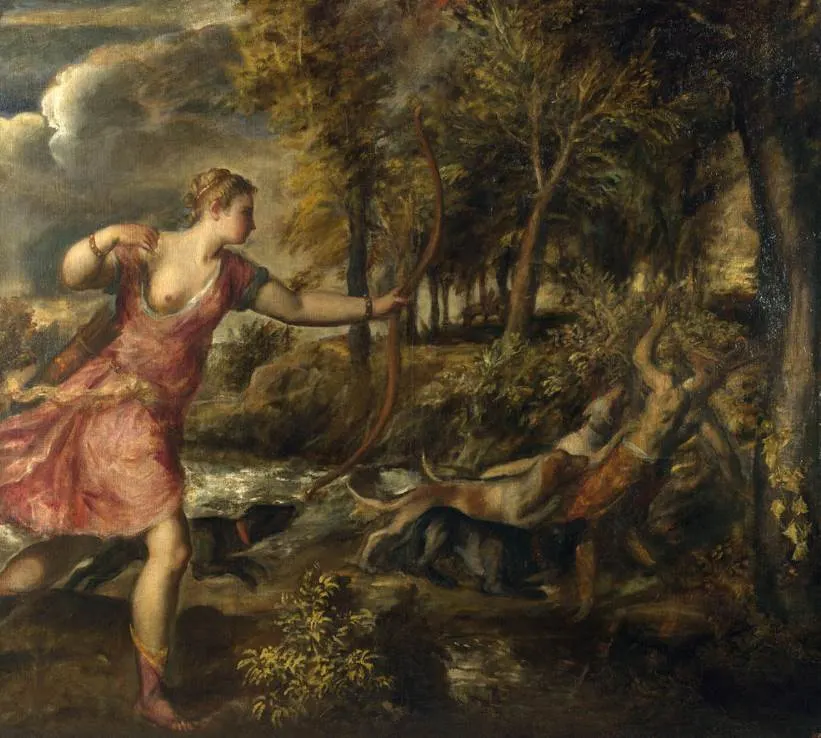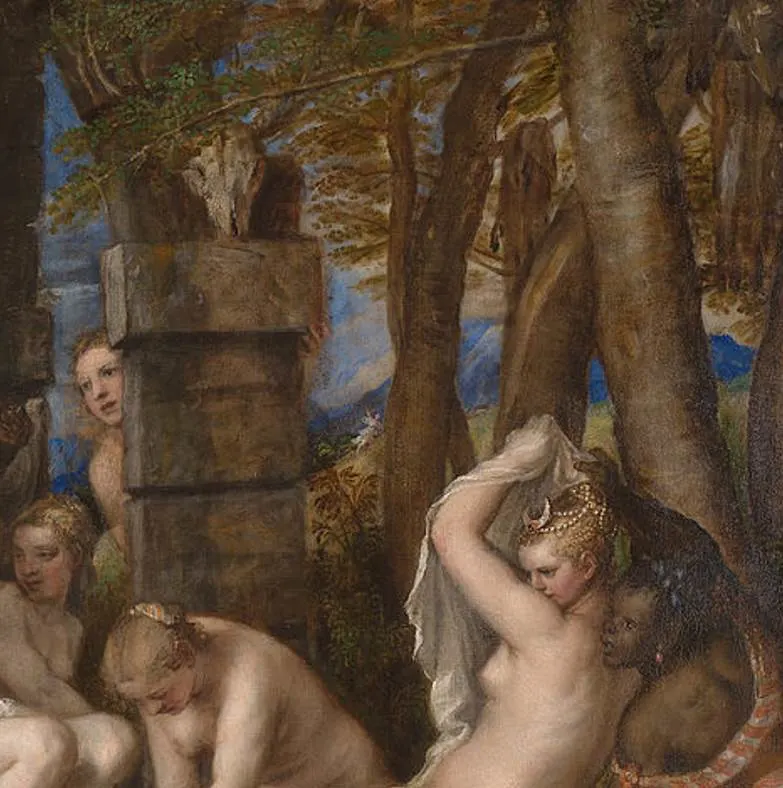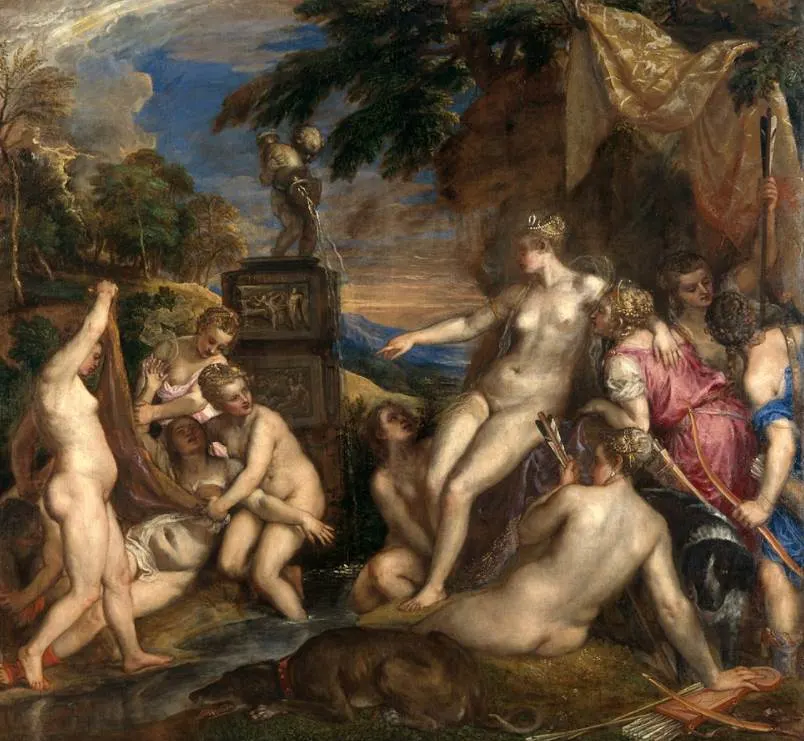One of the greatest collections of paintings created by renowned Renaissance artist of the Venetian School Tiziano Vecelli (1488-1576), better known by his nickname “Titian,” depicts various mythological scenes.
One of these has changed hands quite a bit since it was completed in the 16th century and was sold for an incredible amount of money during the 2000s.
In this article, we’ll take a closer look at some of the most interesting facts about Diana and Actaeon by Titian, one of the artist’s masterpieces that has an amazing story to tell.
1. It was painted for the King of Spain during the 1550s
The final years of Titian were defined by his perfectionism. His mature style already put him among the best colorists to have ever lived at that time, but somehow he never felt it was good enough.
This was around the time that he started working for King Philip II of Spain as a court painter and portraitist. He created a series of 7 paintings referred to as the “Poesie,” mythological paintings that are considered to be among his best works.
He completed Diana and Actaeon, one of the 7 mythological paintings of this series, somewhere between 1556 and 1559. This was the moment when he was at the height of his ability, especially because he was approaching his 70s (he died aged 87 or 88).

2. It depicts a moment described in Ovid’s “Metamorphoses”
Most of these epic mytholoçgical paintings are scenes described in a work called “Metamorphoses,” a work written by the Roman poet Ovid (43 B.C.-18 A.D.). This man lived during the reign of the first Roman Emperor Augustus, over 2 millennia ago.
This is considered to be one of his best works and consists of 15 books describing various mythological events. Titian used one of the 250 myths in this work as inspiration for this particular painting.
It depicts the moment that Actaeon, a hunter, walks into the secret bathing place of goddess Diana and the Nymphs. They clearly appeared to be shocked as they are all naked and seen by the equally surprised hunter.
3. Titian painted the sequel to this story as well

So what happens the moment after both shocked parties realized what just happened?
Well, nothing good for Actaeon, that’s for sure!
Diana is the Roman goddess of the hunt. She becomes so angry that Actaeon saw her naked that she transforms him into a deer. The hunter subsequently becomes the hunted himself and is killed by his own hounds.
Titian started working on the sequel to this story called the “Death of Actaeon” shortly after completing this work in 1559. Unlike Diana and Actaeon, he never completed and delivered this work, even though it’s considered to be one of the 7 Poesie paintings.

4. The painting remained in Spain until the early 18th century
Since it was commissioned by Philip II of Spain, Diana and Actaeon entered the royal collection of Spain and remained there until the year 1704.
Clearly, King Philip V of Spain didn’t like the mythological subject of the paintings because this was the year that he gave them away to the French Ambassador in Spain.
It quickly entered the collection of renowned art collector Philippe II, Duke of Orléans (1674-1723), the nephew of King Louis XIV who ended up becoming the Regent of the Kingdom of France between 1715 and 1723.
At the start of the French Revolution in 1791, the painting was sold to an art dealer in Brussels by Louis Philippe II, Duke of Orléans, shortly before he lost his head the guillotine.
This dealer eventually displayed it in London where it was bought by Francis Egerton, 3rd Duke of Bridgewater, a rich coal-magnate. He eventually bequeathed the painting to his nephew, Earl Gower, the 1st Duke of Sutherland, and It remained in the Sutherland collection until the 21st century.
That’s quite a bit of history, don’t you think?
5. It was sold for an astounding £50 million
The extensive and well-documented history of the painting just adds value to it, that’s a guarantee. This is also the main reason why the Scottish National Gallery and the National Gallery in London has to put in a serious effort to acquire the painting when the 7th Duke of Sutherland put it for sale in 2008.
The announcement that the £50 million needed to acquire the painting was raised was made on February 2, 2009. This means that the painting is co-owned by the two art museums.
Because it can only be in one location at a time, it’s displayed for 5 years in each museum on an alternating basis.

More interesting facts about Diana and Actaeon by Titian
6. Most of the 7 works depicting the mythological scenes from Ovid’s Metamorphoses have about the same size. This oil on canvas painting has dimensions of 185 × 202 centimeters (73 × 80 inches).
7. Diana can be seen sitting on the right side of the painting. She is recognizable because she is wearing a crown that features a crescent moon. She is also accompanied by a dark woman who is supposedly her servant.
8. Titian included some details which hint at the outcome of the story. The skull of a deer can be seen hanging just above the bathing Diana and Nymphs. The skins of the previously hunted prey can be seen hanging above their heads as well.

9. The sequel of this painting called “The Death of Actaeon” was referred to by Titian as “Actaeon mauled by hounds” during his correspondence with King Philip II of Spain.
10. Diana and Actaeon wasn’t the only painting bought by the National Galleries of Scotland and the National Gallery in London. There’s another painting called “Diana and Callisto” which was sold to both museums for £45 million.
This painting was actually painted as an accompanying painting to the one described in this article. This also means that both works hang together whenever they are on display in one of these two museums.
11. The sequel to this painting is owned by the National Gallery in London. This means that 3 paintings are hanging beside each other when they are on display here.
The Death of Actaeon was bought a long time before in 1972 by the National Gallery for a sum of £1,680,000. It had already been on loan at the museum for 10 years before that.
12. Diana and Callisto depicts another moment of shock while both Diana and the nymphs are bathing. This particular painting depicts the moment that Diana finds out that one of the nymphs, her maid named Callisto, has become pregnant by Jupiter.

